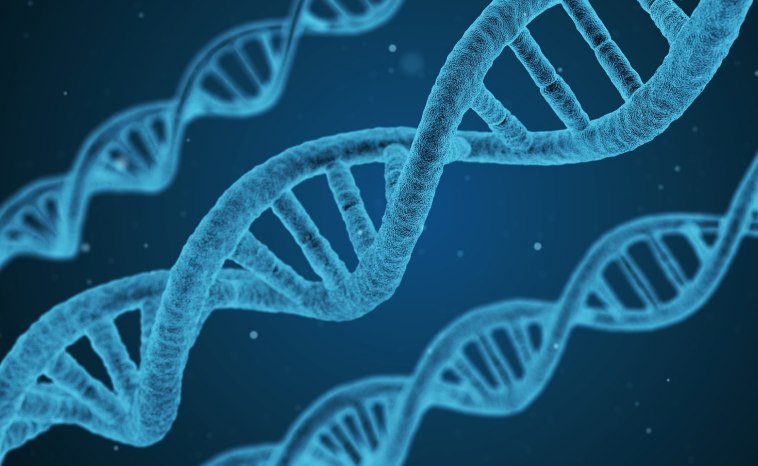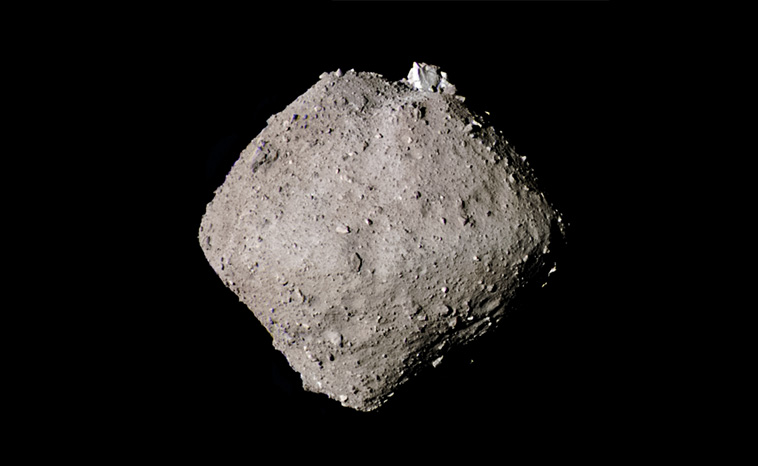Ryugu Asteroid Has Building Blocks of Life

After Hayabusa2’s exciting rendezvous with the asteroid 162173 Ryugu, scientists have found organic molecules essential for life in samples returned to Earth. Could life have been brought to Earth by asteroids from the far reaches of our galaxy? In this article, we’ll tell you everything you need to know.
Hayabusa2’s Mission to Ryugu
Leaving Earth in 2014, the Japanese Aerospace Exploration Agency’s (JAXA) Hayabusa2 spacecraft headed for 162173 Ryugu, a primitive near-Earth asteroid. After touching down on Ryugu in 2018, it took samples and surveyed the asteroid before heading towards home in 2019 to drop off the asteroid samples before jetting off on its next mission.
Since receiving the samples, scientists have been working on analysing the materials and have now made an exciting announcement about their findings. The initial analysis team confirmed that they had discovered organic materials amongst the Ryugu samples, including uracil, a biological compound found in RNA, and niacin, otherwise known as vitamin B3.
“The presence of prebiotic molecules on the asteroid surface despite its harsh environment caused by solar heating and ultraviolet irradiation, as well as cosmic-ray irradiation under high-vacuum conditions, suggests that the uppermost surface grains of Ryugu have the potential to protect organic molecules,” said Hiroshi Naraoka, a scientist at Kyushu University and lead author of the paper that presented the findings. “These molecules can be transported throughout the solar system, potentially dispersing as interplanetary dust particles after being ejected from the uppermost layer of the asteroid by impacts or other causes.”
What Is Ryugu?
162173 Ryugu is a near-Earth and potentially hazardous asteroid from the Apollo group of asteroids. It orbits the Sun at between 0.96 – 1.41 astronomical units and has a diameter of approximately 900 metres.
Ryugu is a C-type or carbonaceous asteroid. These asteroids are common in our Solar System, accounting for around 75% of all known asteroids. They typically have dark surfaces and occupy the outer regions of the main asteroid belt.
Did Asteroids Bring Life to Earth?
While there is no clear evidence of how life started here on Earth, one popular theory involves panspermia. Panspermia, first proposed by the ancient Greek philosopher Anaxagoras, suggests that life exists throughout the universe and was brought to Earth by celestial objects, such as meteorites, comets, and space dust.
The original panspermia theory posits that life would already exist before arriving on our planet, perhaps as microbes hitching a ride on an asteroid. However, pseudo-panspermia suggests that organic molecules, the essential elements for life to emerge, could reach Earth instead. Life could then develop through abiogenesis – a theorised process of life arising from non-living materials.

Fly Me To The Stars
While we don’t currently have the answers to explain how living things first developed in our corner of the universe, the discovery of vital organic molecules on Ryugu gives us another tantalising clue as to the origin of life.
And while scientists are working hard to learn more about where we came from, you can take a virtual reality tour of the universe with the OSR’s Fly me to the stars app. Using the app and a pair of VR glasses, you can locate your own named star, explore planets and constellations, and claim rewards in the constellation game.


